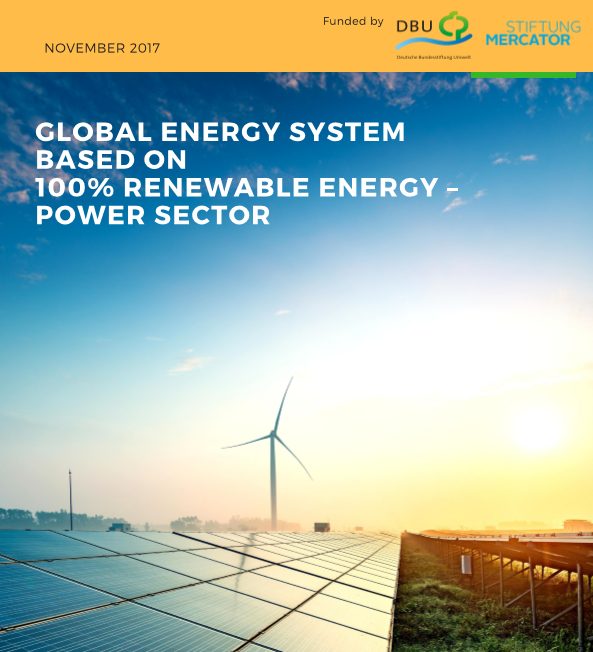
100% renewables by 2050
A global transition to 100 percent renewable electricity, far from being a long-term vision, is happening now, the study says. It is the work of Finland's Lappeenranta University of Technology (LUT) and the Energy Watch Group (EWG).
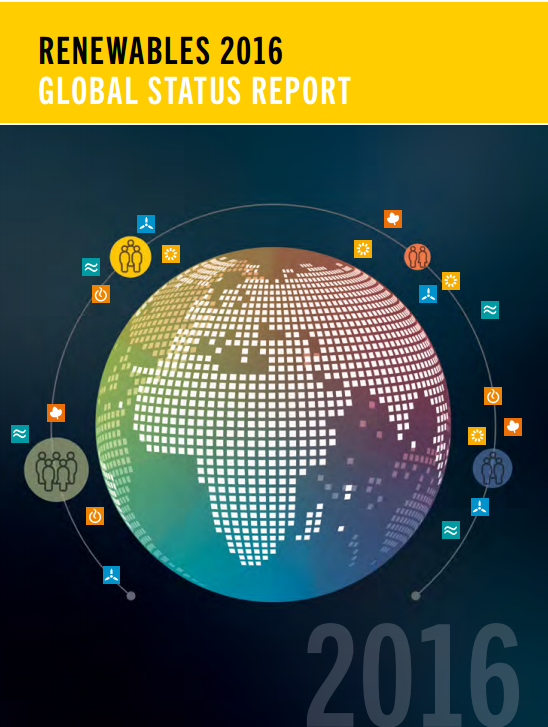
Global Status Report 2016
The year 2015 was an extraordinary one for renewable energy, with the largest global capacity additions seen to date, although challenges remain, particularly beyond the power sector. Total installed capacity accounts for 785 GW (not including hydro) and 1849 GW (hydro included). Net annual investment is around $286 billion. For details please see REN21 Global Status Report 2016.
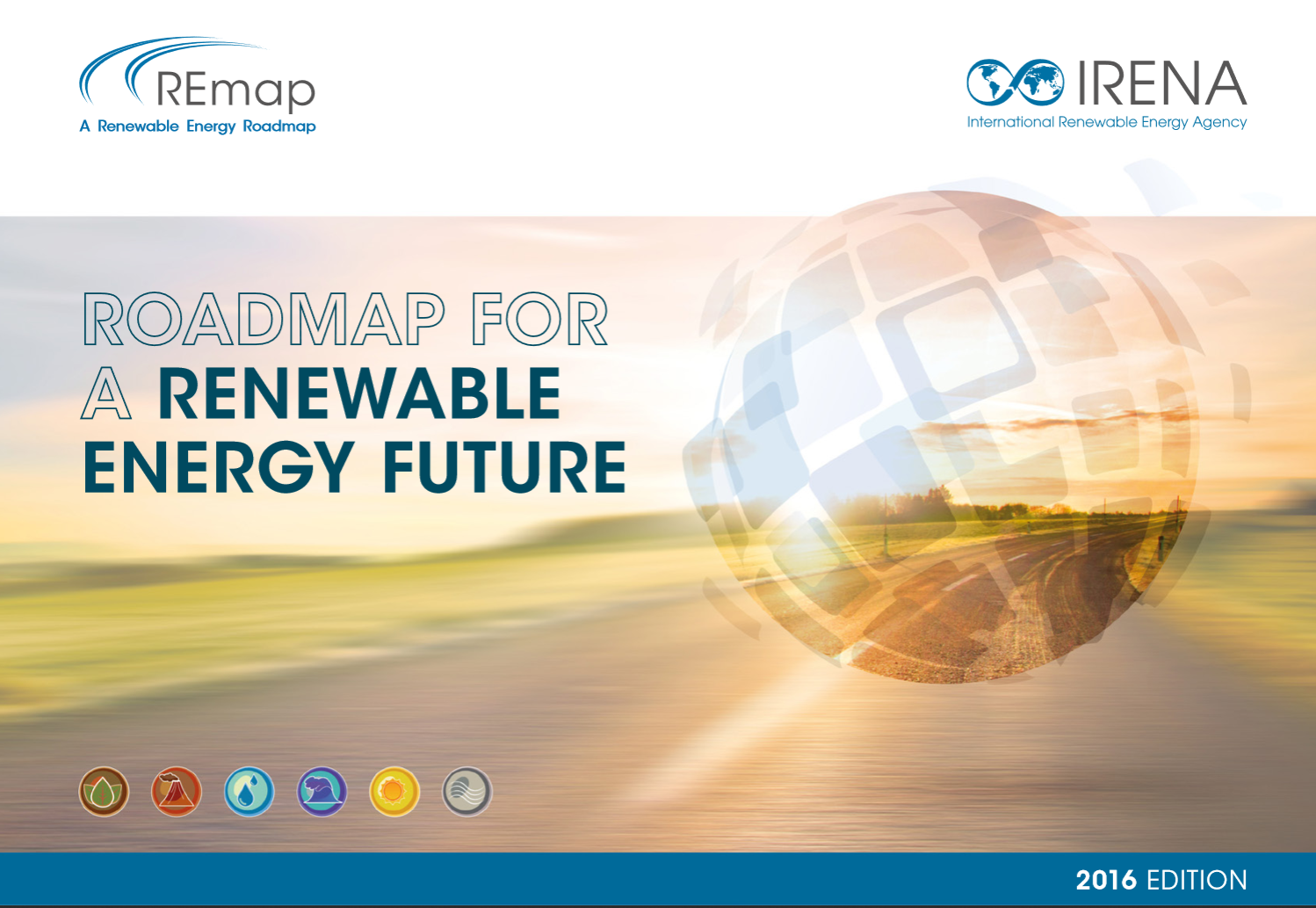
Roadmap for Renewable Energy Future
IRENA’s global roadmap provides an in-depth perspective on the energy transition in 40 economies, representing 80% of global energy use. It offers concrete technology options and outlines solutions to accelerate renewable energy growth. Doubling renewables in the global energy mix by 2030 is not only feasible, but cheaper than not doing so. Economic savings would far exceed the costs. It would create more jobs, boost economic growth and save millions of lives annually through reduced air pollution.
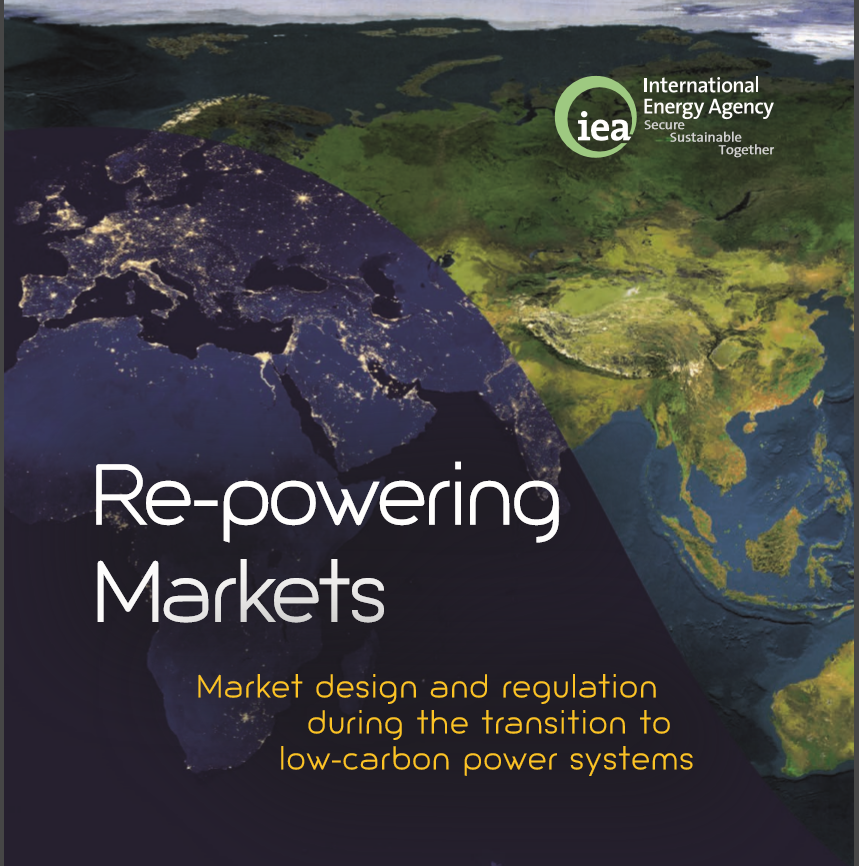
Re-powering markets
Electricity markets are undergoing massive transformation, as the push for low-carbon power generation shifts the industry towards high investment in renewables and other new technologies even as demand stagnates or declines in many countries. The recent study by IEA offers guidance to governments, regulators, companies and investors on how to transition to low-carbon generation.
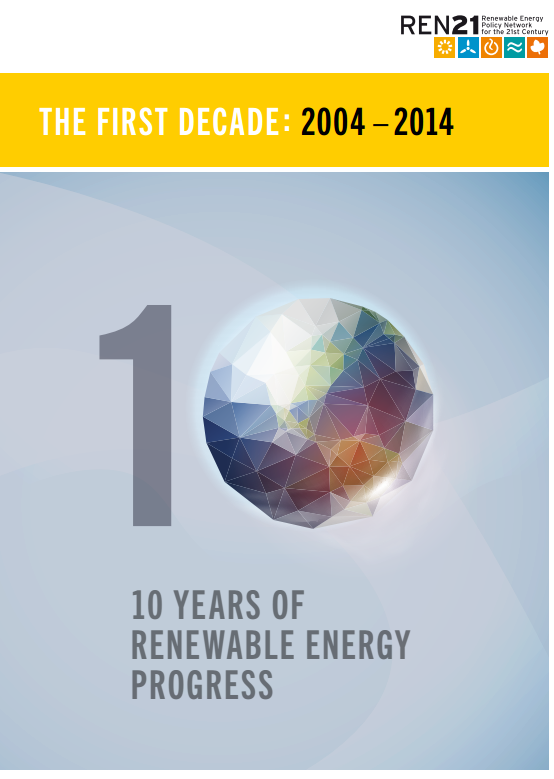
REN21 "10 years of renewable energy progress"
The last decade (2004 – 2014) saw a steady increase in the global demand for renewable energy. While overall primary energy supply from renewables in 2004 was 57.7 EJ per year, by 2013 the total supply had grown to 76 EJ annually — an overall increase of 30%. Development of renewables is described in a report by REN21 (Renewable Energy Policy Network for the 21st Century) "10 years of renewable energy progress".
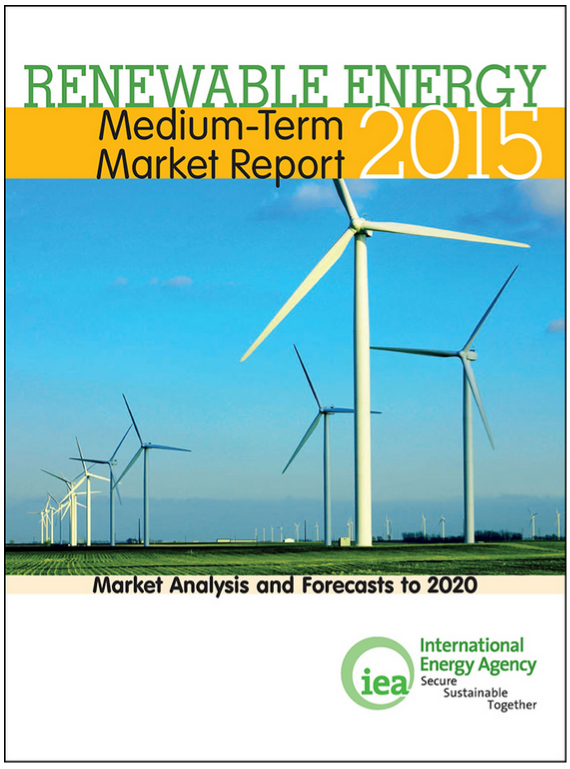
IEA Renewable Energy medium term market report 2015
Pointing to the great promise renewables hold for affordably mitigating climate change and enhancing energy security, the report by an International Energy Agency warns governments to reduce policy uncertainties that are acting as brakes on greater deployment.
To download the executive summary of the Medium-Term Renewable Energy Market Report 2015, please click here.
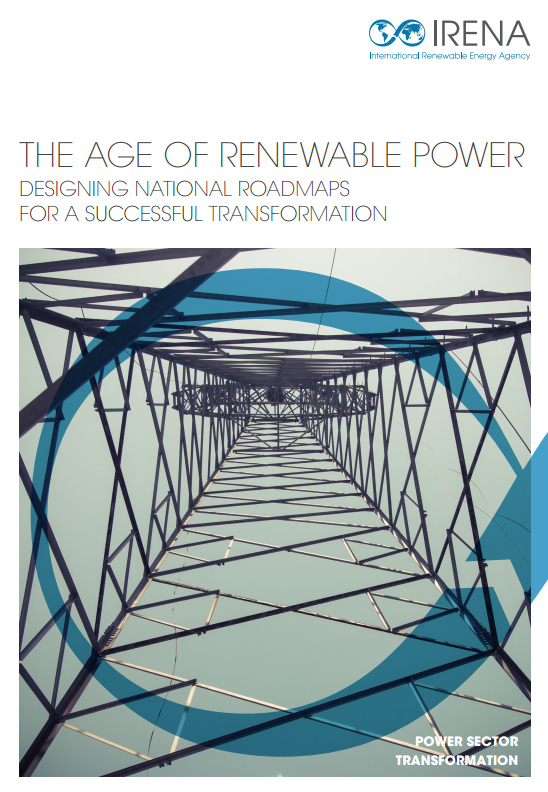
The Age of Renewable Power by IRENA
IRENA The Age of Renewable Power Report: renewable generation capacity accounted for 1,828 gigawatts (GW) in 2014, compared to around 1,500 GW of gas-fired power station and 1,880 GW of coal-fired power station globally. The majority of power generation comes from hydropower (1,172 GW), followed by wind power (370 GW), and solar photovoltaics (175 GW). In particular, the share of variable renewable energy from solar photovoltaics and wind power is expected to increase from 3% of annual generation production in 2014 to around 20% by 2030. This development will have profound impacts on how our power systems are operated, managed, financed and governed.
Summary of the report can found here.
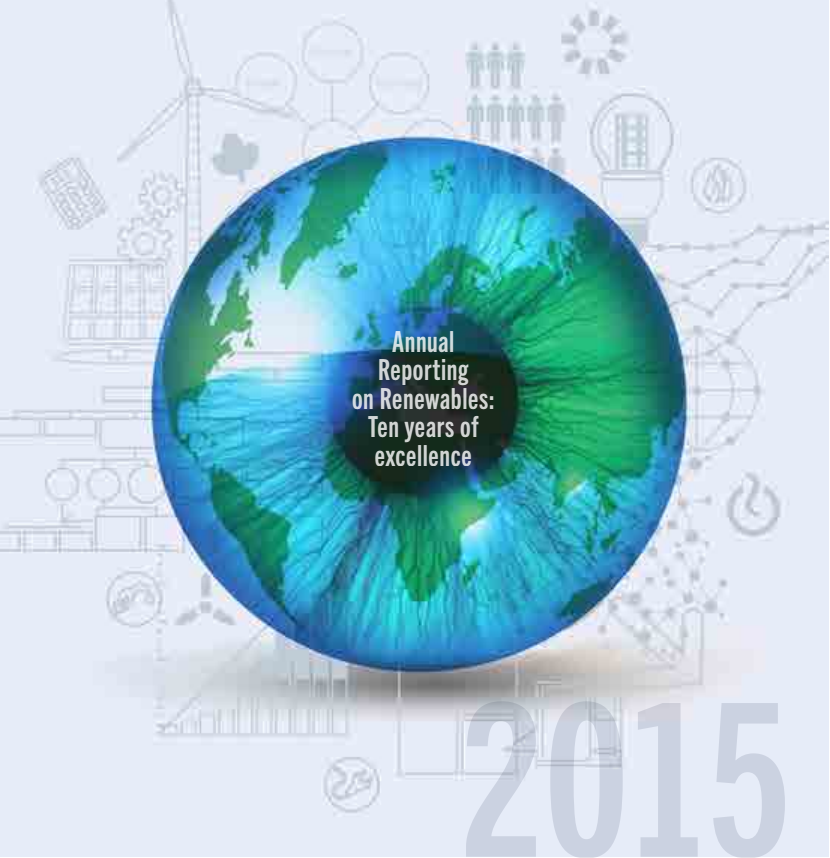
Renewables Global Status Report 2015
REN21's Renewables Global Status Report (GSR) 2015 states that in 2014, renewable energy expanded significantly in terms of capacity installed and energy produced, with renewable energy investments in the power sector outpacing net investments in fossil fuel power plants.
There is a rising awareness worldwide that renewable energy and energy efficiency are critical not only for addressing climate change, but also for creating new economic opportunities and for providing energy access to the billions of people still living without modern energy services.
To download full report.
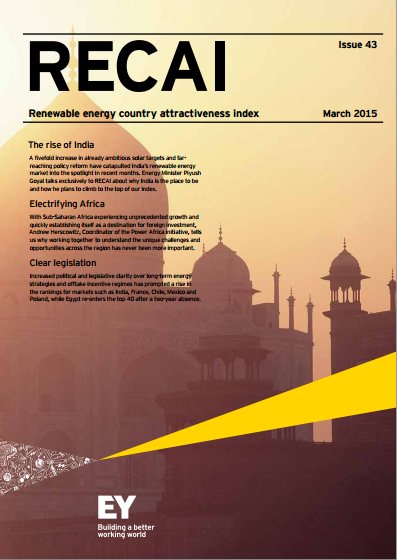
Renewable energy country attractiveness rating
EY in its report "Renewable energy country attractiveness index. March 2015" presents ranking 40 countries in terms of their attractiveness for investing in renewable energy opportunities and the availability of renewable energy.
The report includes 40 participating countries: Australia, Austria, Belgium, Brazil, Canada, Chile, China, Denmark, Egypt, Finland, France, Germany, Greece, India, Indonesia, Ireland, Israel, Italy, Japan, Kenya, Mexico, Morocco, Netherlands, Norway, Peru, Philippines, Poland, Portugal, Romania, Russia, Saudi Arabia, South Africa, South Korea, Spain, Sweden, Taiwan, Thailand, Turkey, United Kingdom and United States.
Detailed report can be found here
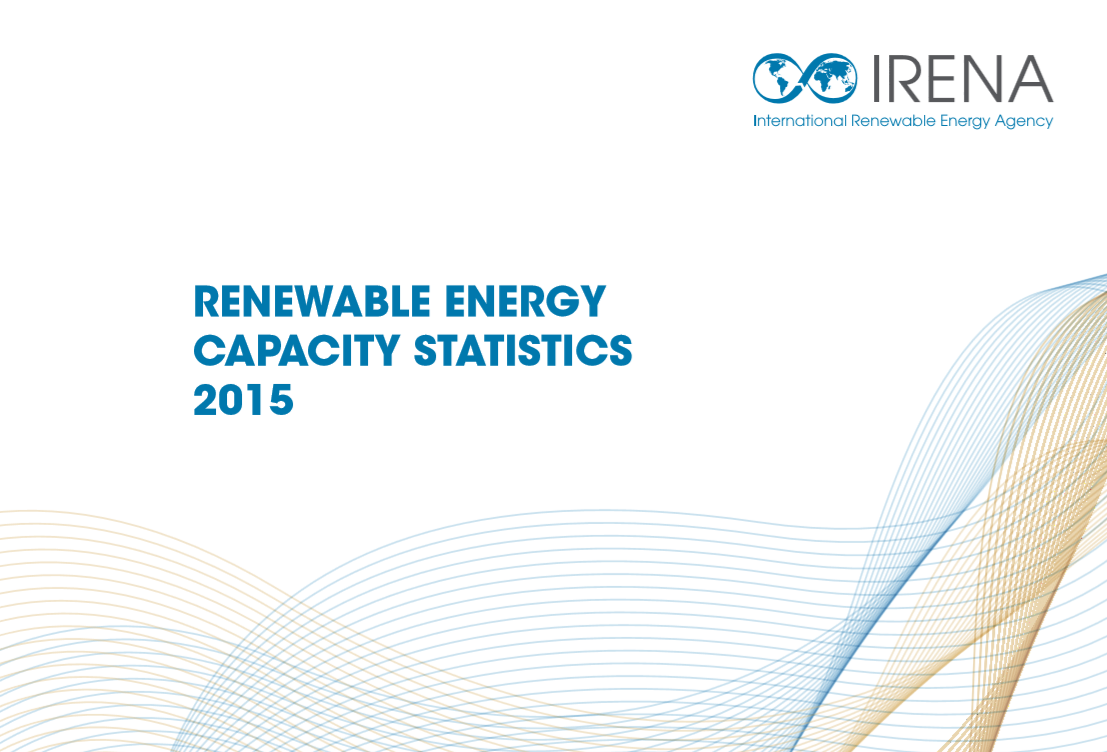
Renewable Energy Capacity Statistics
The International Renewable Energy Agency (IRENA, 2015) has set out to produce comprehensive, reliable data sets on renewable energy capacity and use worldwide. The first such data set shows renewable power-generation capacity for 2000-2014.
Charts highlighting key data are available here.
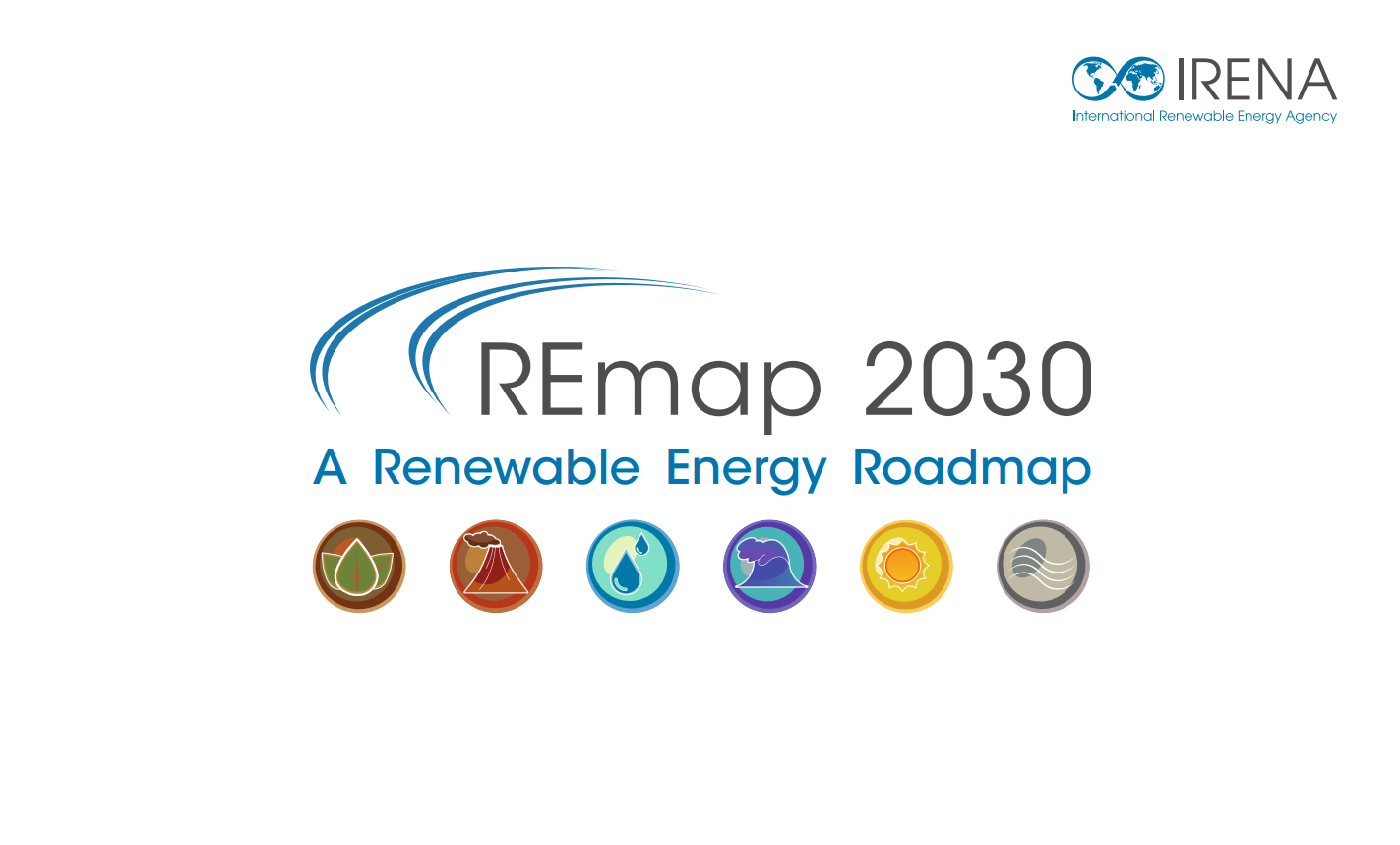
A renewable energy roadmap 2030
The global share of renewable energy can reach as high as 36% by 2030 with technologies that are already available today as well as with improved energy efficiency and energy access. Going further than this will require thinking “outside the box”, with early retirement of conventional energy facilities, technology breakthroughs and consumer-driven societal change. The report summarised here, prepared by the International renewable energy agency (IRENA) through broad consultations and engagement around the world, provides a global roadmap for doubling the share of renewables in the energy mix.
This full report of REmap 2030 provides insights into five specific areas:
- Pathways for doubling the share of renewable energy in the global energy mix based on the national plans of 26 REmap countries and the additional REmap Options, and how to go beyond doubling based on different strategies represented by the RE+ Options;
- Socio-economic impacts related to doubling the global share of renewable energy;
- Current situation of renewable energy markets in the power, district heat and end-use (industry, buildings, transport) sectors as well as developments between 2010 and 2030 if all REmap Options are implemented;
- National policy proposals to improve the existing policy framework;
- Opportunities for international co-operation of governments for doubling the global share of renewable energy.
Download Renewable energy roadmap 2030 by IRENA.

